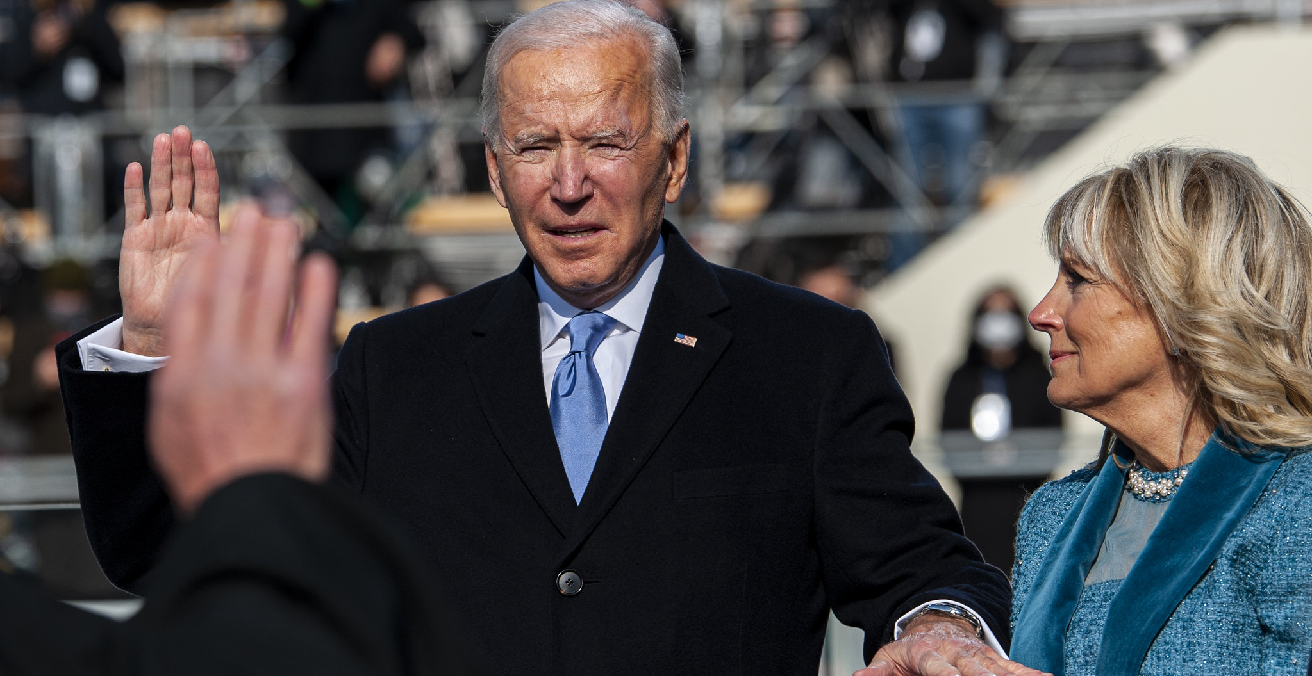The Hard Road Ahead for Biden’s Unity Call

Joe Biden has commenced his presidency with a strident call to the nation to unify and save American democracy. It may be too late.
The setting for US President Joe Biden’s inauguration address reflected his words. Some 25,000 National Guard troops were deployed to safeguard the event, more than are currently deployed in Afghanistan, Iraq, Syria, and Africa combined. Biden spoke to an almost empty National Mall, cleared because of threats of violence, standing in front of the Capitol, invaded two weeks earlier for the first time since the War of 1812.
In this wartime-like atmosphere, Biden declared: “We face an attack on our democracy and on truth….” He sees the solution not in military, police, or judicial actions, but rather in uniting the American people so they treat each other with dignity and respect. Unity is now Biden’s catch cry and perhaps the measure he will be judged against.
Biden considers the cause of today’s disunity to be the truth being manipulated with facts manufactured to order. Rebuking the previous president, Biden observed: “Recent weeks and months have taught us a painful lesson. There is truth and there are lies, lies told for power and for profit.”
Donald J. Trump is the first US president not to accept the electoral results, declare them illegitimate, and announce that he actually won. His predecessors have occasionally been grumpy, but none have actively worked to overturn elections using inflammatory rhetoric, legal actions, threats to public servants, and cajoling of fellow politicians.
Trump’s call was widely disseminated, and around two-thirds of Republican-leaning Americans accepted it without any evidence. The Senate majority leader, Republican Mitch McConnell, noted: “The mob was fed lies.…They were provoked by the President and other powerful people, and they tried to use fear and violence to stop a specific proceeding of the first branch of the federal government which they did not like.”
This outcome relied on a large web of conspiracy theories. Such theories are often exploited by ambitious political leaders seeking to manipulate those vulnerable to such notions. Trump began actively using the anti-Obama “birther” conspiracy theory in 2011. His use of the lie was disseminated nationally by Fox News and proved very effective in positioning him as a potential candidate for US president. Doubling down on this success, Trump embraced so many conspiracies that Wikipedia now has a page listing them all. His greatest success is embodied in QAnon, a group whose beliefs revolve around hero-worship of Trump, and who were prominent in the Capitol storming. Each conspiracy has brought Trump votes, and often, the support of extremist groups such as the Proud Boys, also of Capitol storming notoriety.
This approach to gaining political advantage builds on social media’s ability to develop closed groups united in the correctness of their beliefs. A self-referential “majority illusion” effect is created where, if enough of the group’s members believe in something then the belief is considered true, simply because many believe it. The so-called echo-chamber effect is created by the algorithms used by many social media platforms to deliberately try and connect “like” people together. People are effectively locked into a group, and thus able to be steered towards desired political outcomes.
The emerging solution is to separate the conspiracy weavers, and the politicians who use them, from ther large number of conspiracy followers. The vision is that a successful impeachment could disable Trump, while removing extremist elements from social media will prevent conspiracy dissemination. Three issues arise from this approach.
First, there has been no attempt on the part of officials to mount a counter-conspiracy narrative. This decision seems in line with an argument of George W. Bush strategist Mark McKinnon: “You can’t just confront them [Trump supporters] with the facts because they don’t believe it. They live in an alternate universe where they have been told other ‘realities,’ that they think are realities.” Others argue that even discussing conspiracy theories with believers simply entrenches their views. However, some are more optimistic. My own view, derived from social constructivism, is that people need to decide an existing idea has demonstrably failed and that a replacement idea is needed. An old idea’s exit thus leaves space to consider a new one. America’s conspiracy holders, though, do not consider their existing ideas to have failed. They remain strong in their beliefs.
Second, it may be too late. Trump received over 74 million votes. If two thirds of these voters believe conspiracy theories, that equates to 48 million Americans. Such a large group can continue self-reinforcing indefinitely, especially given the existence of supportive nation-wide cable TV and social media ecosystems. For the “true believers,” their identity is now deeply connected on an individual basis with conspiracy theories. American politics have been afflicted by conspiracy theories since the republic’s formation, but what makes the current situation so difficult to resolve is its sheer scale.
Third, 48 million angry minds are fertile ground for new demagogues to capture. A major new conspiracy is already gaining traction. This conspiracy holds that any attempt to prevent conspiracy theory makers from wide dissemination of their theories is an attack on free speech. The belief is that people should be allowed to develop and spread conspiracy theories and extremist ideas without obstruction or delay. This theory is in the deep and enduring vein of the “paranoid style in American politics,” discerned by Richard Hofstader in 1964 and which involves “heated exaggeration, suspiciousness, and conspiratorial fantasy.”
Some of the weavers of this emerging conspiracy theory argue the Biden administration will reprogram Americans with a false history downplaying Trump’s greatness. Others envision Biden’s America as replicating Nazi Germany through mass brainwashing or suggest that conspiracy theory followers might, like Japanese Americans in World War II, end up in internment camps. This new “free speech is endangered” conspiracy theory is gaining increased media attention. Fox News commentators have warned of the Biden administration’s “plot to control people’s minds,” while Breitbart has railed against major social platforms censoring conspiracy theory super-spreaders.
Biden’s call to unity might be in the nation’s best interests, but the conspiracy theory mode of modern US politics suggests success is doubtful. This has implications. A democracy is a shared idea that citizens of a society hold is best for their governance. Conspiracy theories in the US undermine this shared belief, continuing the downward trend in the quality of America’s democracy detected in early 2020.
Accordingly, it is likely there will be future US conspiracy theory governments in the Trump model that will again exploit social fragmentation as a route to power. These may be relatively ineffective governments with mediocre economic policy performances and which further damage US social cohesion. Future stormings of the Capitol thus appear probable, and it worryingly may become the new norm. Perhaps of most concern, such a government’s greatest shortcoming in the US context appears to be in crisis management as exemplified in the Trump administration’s poor pandemic handling. In the end, strong conspiracy beliefs cannot hold back the true reality, no matter how much they try to deny it.
Dr Peter Layton is a Visiting Fellow at the Griffith Asia Institute, Griffith University, an Associate Fellow at the Royal United Services Institute (London) and author of Grand Strategy.
This article is published under a Creative Commons License and may be republished with attribution.




